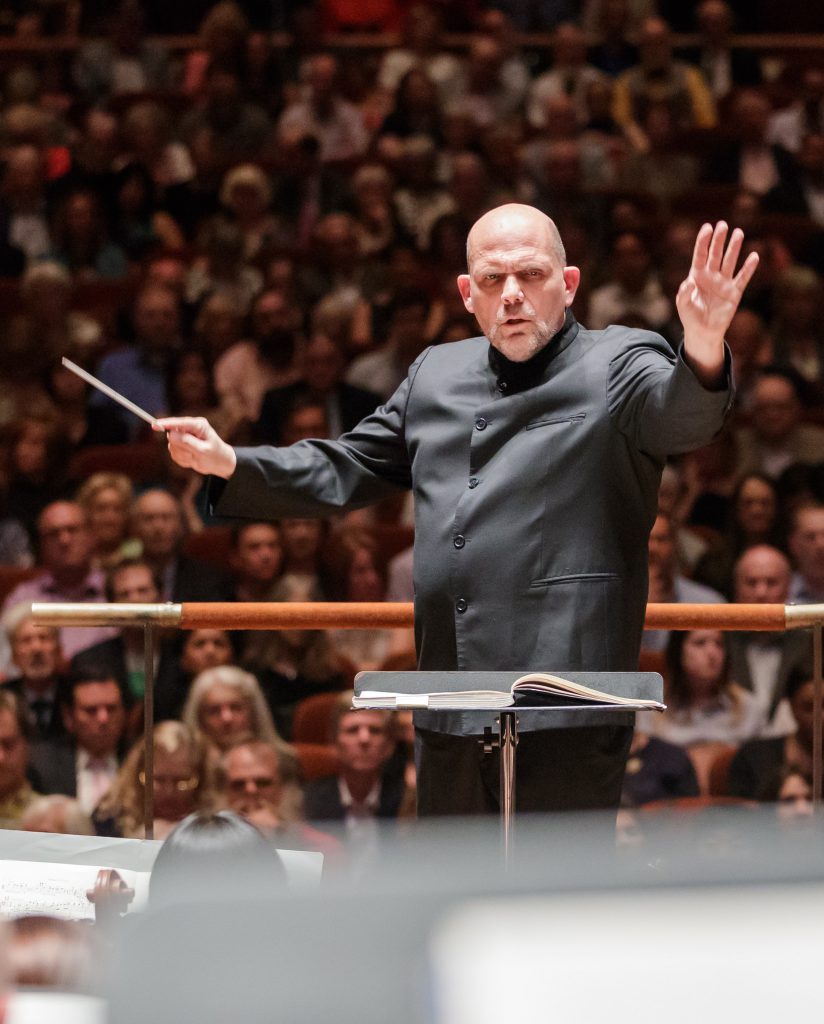Van Zweden opens final DSO season with dark, somber program

Jaap van Zweden conducted the Dallas Symphony Orchestra’s season-opening concert Thursday night. File photo: Mark Kitaoka
A largely somber atmosphere, provided by music of Mahler and the late Steven Stucky, dominated the opening concert of Jaap van Zweden’s final season as music director of the Dallas Symphony Orchestra, Thursday night at Meyerson Symphony Center.
Indeed, given the currently contentious political and cultural climate of the country, one could hardly escape the irony—possibly intentional?—of the opening moments of the program. Van Zweden chose an almost martial version of the National Anthem for the traditional season-opening playing of that patriotic item, and, as is often the case with non-American conductors, phrased the piece in a way that more than overrode the verbal text—in this case, with a touch of bombast.
The irony arrived with the immediate launch, after the anthem, into the purely instrumental seventh movement, “Elegy,” of Stucky’s oratorio August 4, 1964. The work was inspired by the day when the bodies of three murdered civil rights activists were discovered in Mississippi just as President Lyndon Johnson was making the ultimately tragic decision to go to war in Vietnam. This gave the ominous opening drum roll of the Stucky work, while the blare of a particularly aggressive version of the Star-Spangled Banner still echoed, an even darker resonance.
Van Zweden and the Dallas Symphony premiered the entire Stucky oratorio nine years ago; the American composer’s untimely death at the age of 66 in 2016, his Texas roots, and his association with the Dallas Symphony and van Zweden made it an apt opening work for van Zweden’s final season. And the broad modal harmonies and subtle inter-mixture of sorrow and gathering disaster hold up beautifully a decade later.
With the final quiet cadence of the Stucky work barely dying away, the dread-inducing opening trumpet solo of Mahler’s Fifth Symphony replied, introducing the massive first movement funeral march. Here, as in all his symphonic works, Mahler demands an immaculate sense of timing both on the measure-to-measure level as well as a sense of how each note fits into the mammoth seventy-minute structure. Van Zweden’s reading gave a sense of opulently wide parameters but with tight control within those boundaries. And, although this work has sometimes been described as arriving ultimately at triumph, one sensed in van Zweden’s version an aura of ecstatic defiance, rather than joy or victory, in the feverish final moments.
Van Zweden’s perfect pacing and timing were particularly evident in the famous Adagietto for strings and harp, in which he entered with pronounced restraint—resulting in urgent heart-wrenching climaxes within the movement.
The orchestra itself performed with impressive precision and the clean, straightforward tone that is its hallmark. Principal horn David Cooper, currently on sabbatical for one year, returned as guest principal for this concert only; his performance of the horn solos in the third movement, pivotal to the drama of the entire work, were, as always in Cooper’s performances, a display of stunning virtuosity delivered with apparent ease.
As is the case with van Zweden at his best, this program far transcended the merely entertaining or engaging, giving the audience a powerful, if somewhat dark-hued, emotional and intellectual experience.
The program will be repeated 2:30 p.m. Sunday at Meyerson Symphony Center. mydso.org; 214-849-4376


